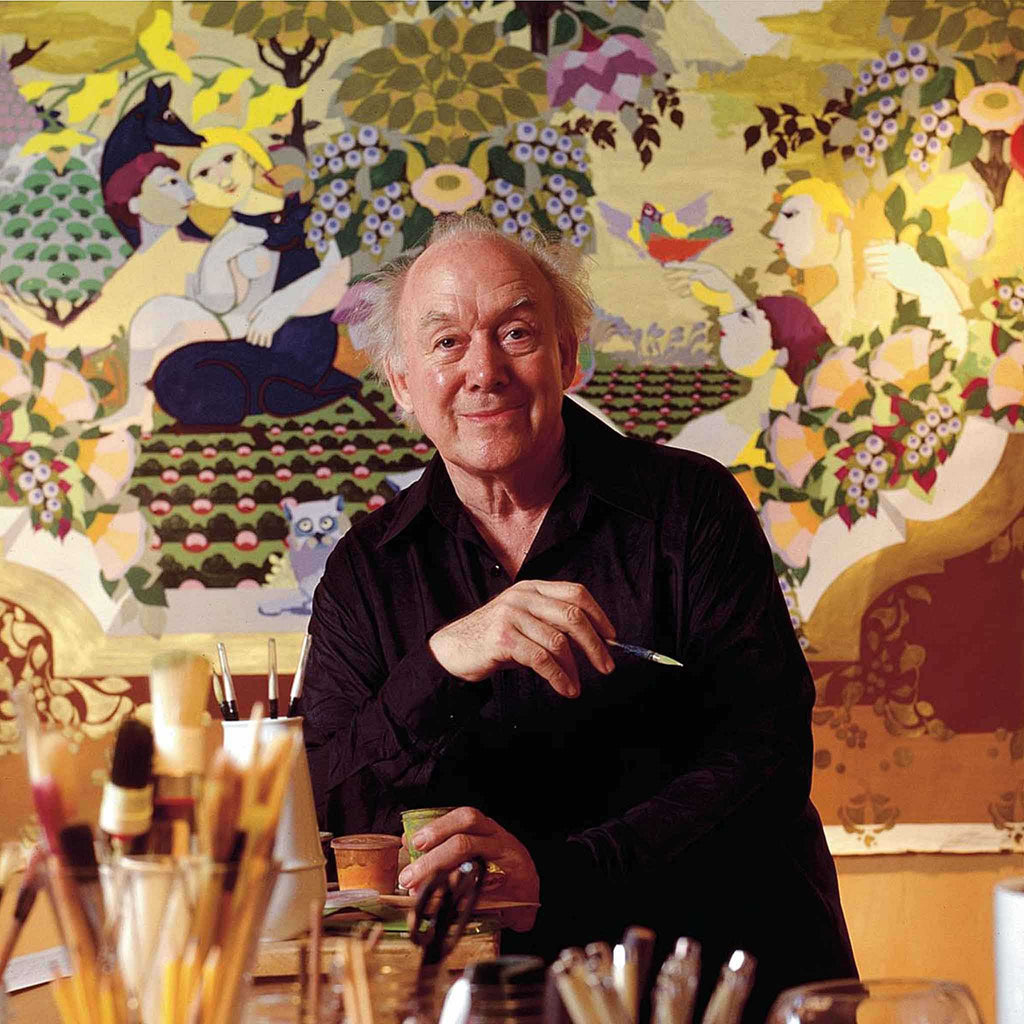Bjørn Wiinblad

Bjørn Wiinblad was born in Copenhagen in 1918. At a very early age, he began to show signs of his talent for drawing and creating imaginative worlds. Aged 17, he began an apprenticeship as a typographer, but soon realized that his heart was set on following the path of an artist.
 On qualification as a journeyman, he was immediately accepted onto the Graphic Programme at the Royal Danish Academy of Fine Arts.
On qualification as a journeyman, he was immediately accepted onto the Graphic Programme at the Royal Danish Academy of Fine Arts.
Even though Bjørn Wiinblad was Copenhagen born and bred, and had trained in Copenhagen, his style was anything but Danish, and while functionalism ruled the roost in Denmark, Bjørn Wiinblad went the other way, espousing a style dominated by wavy lines, bright colours and romantic worlds.
 He soon developed his art from ‘just’ drawing to include ceramic art as well. It is said that his work illustrating the ‘1001 Nights’ inspired him to draw a variety of ceramic objects such as vases and pots decorated with themes from the fairy tales.
He soon developed his art from ‘just’ drawing to include ceramic art as well. It is said that his work illustrating the ‘1001 Nights’ inspired him to draw a variety of ceramic objects such as vases and pots decorated with themes from the fairy tales.
 Wiinblad taught himself a variety of ceramic techniques, and from there he expanded his vigorous talent for creation and delight in art to encompass ‘all platforms’: tapestries, complete furnishing designs for hotels, etc. – not to mention grill tables, cutlery, porcelain and matching glassware, fabrics, posters and more.
Wiinblad taught himself a variety of ceramic techniques, and from there he expanded his vigorous talent for creation and delight in art to encompass ‘all platforms’: tapestries, complete furnishing designs for hotels, etc. – not to mention grill tables, cutlery, porcelain and matching glassware, fabrics, posters and more.
Wiinblad did not leap randomly from one object to the next. It was more a matter of an ongoing process, in which one object pointed to the next, and where Wiinblad’s curiosity served to reinforce the flow.
In 1957, Wiinblad was appointed Chief Designer for the prestigious German brand Rosenthal, a position that enhanced his international reputation even further. He was happy to travel all over Europe in connection with launches of dinner services, and people queued up to have items signed by him.
He rarely travelled alone, generally inviting friends along to keep him company on the journey.
The reason why Wiinblad was not as readily recognised in Denmark had to do with his unusual, ‘un-Danish’ style – and with the fact that he earned a great deal of money from his art and productions.
Money was not the driving force for Wiinblad, however; he spent as much money as he made on travel, parties, antiquities, art and so on.
He was often invited to vernissages by young artists in Copenhagen, because they knew that he was always happy to buy something.
What really mattered to Wiinblad was to give free rein to his incredible creative zest and to spread delight to as many people as possible through his numerous and varied productions.

Leave a comment